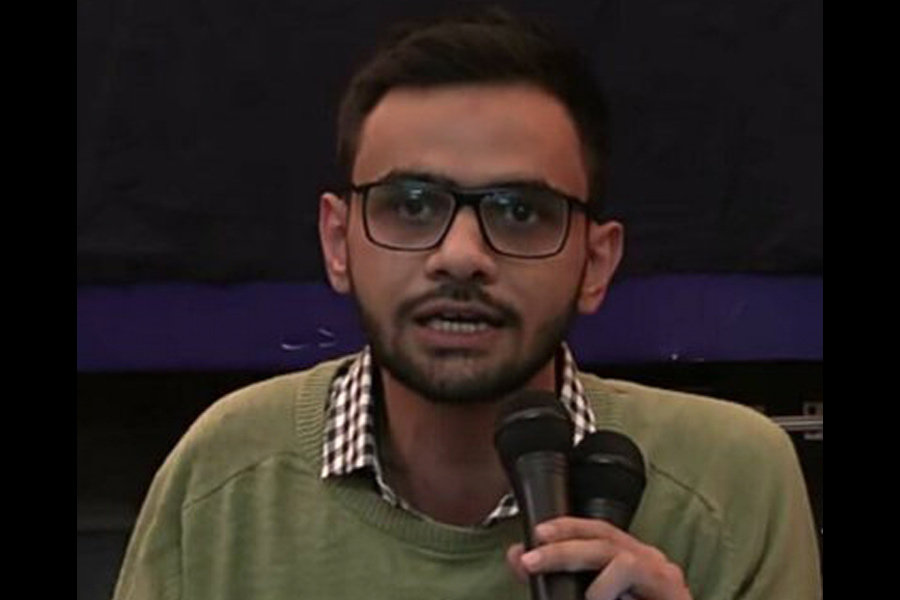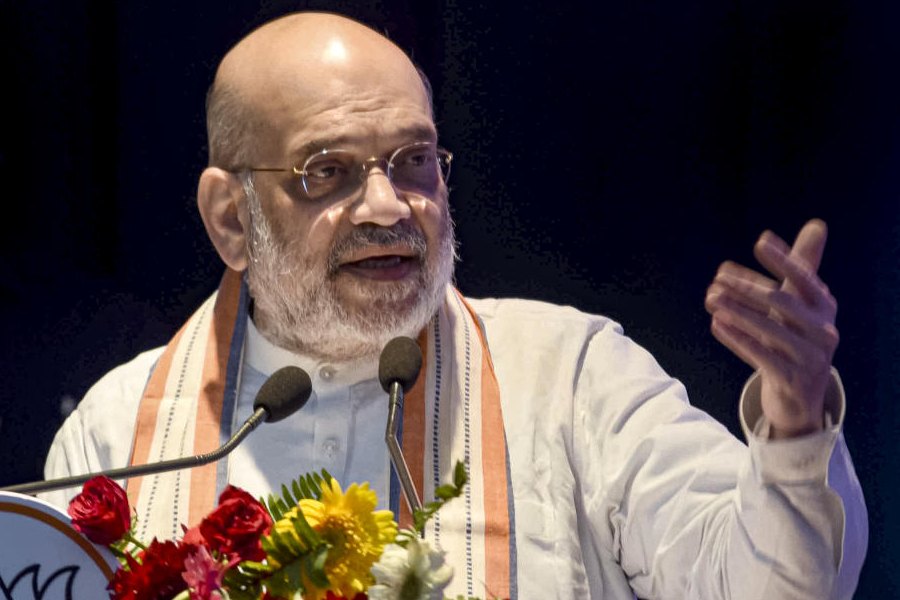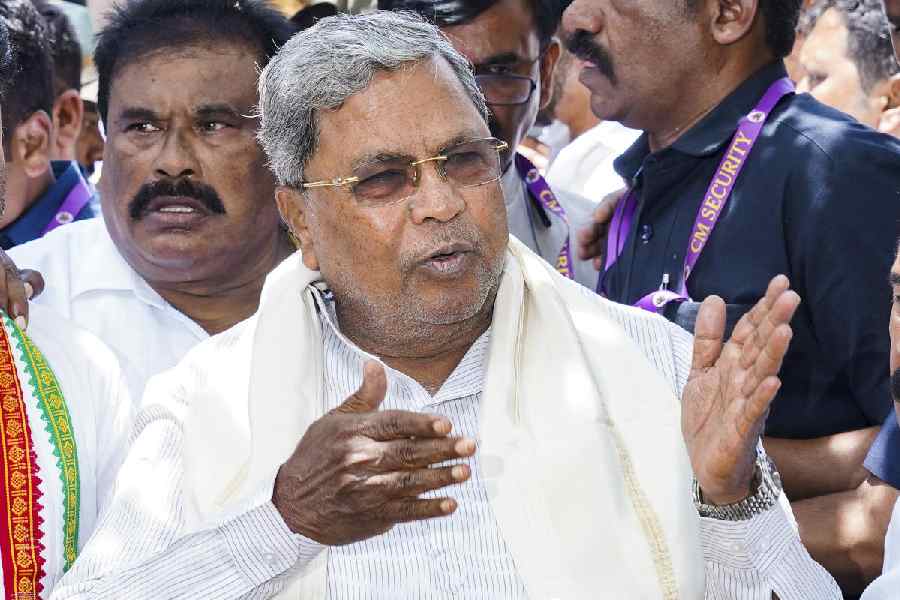 |
| The Glenlorna tea garden in Coorg |
Things to do:Sight-seeing
Nature walk
White water rafting
Playing golf
Not doing anything
In Coorg, the last is the most pleasurable.
Wearing many shades of green on the eastern slopes of the Western Ghats, Coorg sits like a sparkly emerald in Karnataka’s crown. It is home to lush coffee gardens planted by the British and ancient groves nurtured by the native Kodavas. As our car speeds through the undulating landscape, the last rays of the sun trickle through the thick canopy of leaves and branches. Sparse human habitation, scarcely any noise. Only clean crisp air with a woodsy scent.
The Tata Coffee Plantation Trails have renovated some of the British bungalows on their coffee estates and turned them into little sanctuaries for tired souls. Thaneerhulla bungalow, my abode for three days, is a 100-year-old two-storeyed structure that still looks, feels and breathes the colonial air. Once roomed, you are as good as dead to the rough and tumble of the city. I was happy to have no cell phone network and loved sprinting down to the kitchen on the ground floor to take a long distance call, old days’ style.
There’s a nip in the evening air, and the first sip of Coorgi filter coffee promised of great things to come.
Things I did over the next three days at Thaneerhulla:
Read a book, either in bed tucked under a comforter or stretched on the settee in the lounge.
Strolled in the lawn barefoot for hours.
Sat on the verandah steps and watched parrots, butterflies and flowers.
Chewed my food, dissected and savoured every flavour.
Discovered the bliss of not doing anything. Or, not having anythingto do.
A walk in the woods
Lest my limbs got too used to the hibernation, I decided to go for a walk. Like the poet Robert Frost, hoping to get lost somewhere in the woods. But the backyard of Thaneerhulla estate is the Thithimathi forest — the playground of wild elephants — and so a naturalist is assigned to take me around. M.D. Udaya, a Coorgi who has grown up loving the forests.
 |
| Irupu Falls |
Armed with binoculars and umbrellas we set out at seven in the morning, walking down a track lined with coffee bushes. The green pods of the Robusta coffee are hanging pendulously under the shade of tall silver oak, rosewood and jackfruit trees. “The trees act as umbrellas against the scorching sun. They are pruned to give just enough shade to 10 coffee bushes at their feet while letting the sunlight in,” says Udaya, plucking for me a couple of hot wild chillies with the warning that I shouldn’t be too adventurous with them.
Then he fishes out a much-thumbed fat book from his satchel and points at the 300 species of birds nesting in this region. Malabar Grey Hornbill, Hanging Parakeets, Wide-billed Woodpecker (“a rare sighting!”), Greater Racket-tailed Drongo... Udaya cranes his ears and trains his binoculars at the tweeting birds. Sometimes he mimics their calls and also gets a response.
On the way we encounter a spectacular but lethal spider spinning its web, an army of red ants deftly stitching leaves to make a green fortress, a vertical castle-like structure built by termites to let the cold air in and hot air out, white wild jasmine flowers merrily swaying in the breeze.... All the mini marvels of nature I had only seen on Discovery Channel / Animal Planet before.
From the Coorgi kitchen
Lunch and dinner at the Plantation Trails bungalows are an experience in the Coorgi home and hearth, and I looked forward to every meal. There’s no a la carte menu to order from, you just leave it to the kitchen staff to decide what they want to feed you.
Rice balls, Akki roti (small fluffy rotis made of rice), Coorgi Chicken Curry, Coorgi dal, Katla fish fry, Gobi Capsicum Sabzi, Vermicelli Payasam, hot Gulab Jamun... here’s a spread to spoil one silly.
Though, of course, the day would begin with breakfast. I skipped cereals and toast for Coorg-style idlis with Aloo Peas Curry, Upma, omelettes and fresh fruit.
And a cup of filter coffee after every meal. Best had without milk.
 |
| Namdroling Monastery (Golden Temple), Bylakuppe |
Bean to brew
This part of Coorg grows the Robusta variety, which makes for the ‘strong’ brew in your cup. The Arabica variety, which imparts the flavour, is grown further up in the northern part. After the first monsoon showers, the Robusta plant is covered with white flowers, filling the air with a sweet heady aroma. That’s also when the wild bees get high on coffee. Do try the honey at the bungalows, made by the estate staff. It looks like molten gold and has a distinct whiff of coffee.
By end-December the green Robusta pods turn dark red and are ready to be picked. And guests too get to lend a hand in the picking. The coffee processing unit of the Tatas is located in Kushalnagar, a two-hour drive from Thaneerhulla. Here curing and grading of coffee beans is done according to shape and size. The Kushalnagar unit has recently started supplying roasted coffee beans to Starbucks.
To the falls, with the french
Glenlorna — the only tea estate owned by the Tatas in Coorg — is cut off from all worldly distractions. If you so desire, your only human contact could be with the bungalow’s kitchen and housekeeping staff who lay a pretty amazing dinner table.
From the verandah, Glenlorna is a glorious sight and overwhelmingly quiet. Something so vast and silent makes you look out, and then look within. Noya’s seasoned eye finds the right angles to capture the lonesome bungalow silhouetted against the ripples of green blending into the cloudy grey sky. Noya is a French travel agent from Toulouse and my co-traveller for the day from Thaneerhulla guest house. On her 25th trip to India, she has dragged along her reluctant teenaged son Valentin to check out some parts of southern India for adventure-seeking folks back home.
The Irupu Falls is only a half-hour drive from Glenlorna and we hurtle down a winding road in a Tavera, a thin white thread slithering down from a great height in our line of vision. That’s the Irupu.
To reach the place where the falls come crashing down on boulders and drench you with its cool white spray is a steep hike through the Brahmagiri Wildlife Sanctuary. Valentin whistles as we climb up the slippery, mossy steps in one file. Baar baar ha, bolo yaar ha... “That’s a Bollywood song!” I exclaim. “Yes, Lagaan,” Valentin smiles. The film he had seen at age six and loved. “I had seen Lagaan when I was in India and I got a DVD for Valentin,” Noya reveals.
For her, Bollywood has been a window to Indian culture, customs and even etiquette. She thinks Chennai Express made no sense but remembers loving “Shah Rukh Khan’s Paheli”. “The palaces and costumes were so beautiful! And the story was so beautiful.”
It’s started to rain in a sheet. Only Noya is carrying an umbrella and she insists that all four of us (our guide included) squeeze under it. With one Bong, one Kannadiga and two French head-butting, Noya hums a lilting French song. “A man is telling the woman he loves to get under his umbrella... that a piece of umbrella is a piece of paradise,” she tries to translate.
I remember a smart saying in Bengali: ‘Jodi hou sujan, tentul patay nawjon.’ But ‘if you are friends then nine people in tamarind leaf’ sounds a ridiculous translation’, so I hold my peace.
As we trudge back to the base, Valentin gets back to whistling. A happy Noya nods her head and sings along, “Chale chalo, chale chalo...”
On the Tibetan trail
It’s a wonder to find people of the white Himalayas making themselves warm on a green patch in southern India and holding on to a cherished way of life.
On the way to the Plantation Trails, you’ll pass by this settlement of exiled Tibetans — not more than 50 years old — blending in with and yet standing out from their Kannadiga neighbours. The Namdroling Monastery (Golden Temple), Bylakuppe, is its nerve centre. There are Buddhist knick-knacks being sold at the temple gate; monks with shaved heads and smiling eyes going about their business; Tibetan women paying a visit in their sarong-like dresses, their peach complexions painted a purplish bronze by the Deccan sun.
The main prayer hall is a work of art, its colourful walls depicting pictorial tales from Tibetan mythology. From a pedestal, three golden Buddhas — Shakyamuni, Padmasambhava and Amitayus — gaze down on the devotee, glowing in the sunlight streaming in through a part of the roof. After 1pm, a large number of monks wearing purple robes file in and squat on the floor for prayers.
The gongs go off, then the conches, bells and rattles, rising and falling like an orchestra. And then the booming chant reaches a crescendo and crashes against the walls, enveloping the entire temple in a vibrating capsule. When the sound trails off and I walk out, the air is heavy with the fragrance of ghee-dipped wicks burning in the diyas.
It’s a wonder when the uprooted find comfort in an alien land.
Madikeri: the Mistress of Spices
Situated higher up, Madikeri is the headquarters of Coorg, and the weather here has a mind of its own. Clear sky will turn cloudy, clouds will turn into drizzle, drizzle will turn into shower, and before you can gauge its next move, the whole town would be wrapped in a blanket of mist.
Making a trip to Madikeri is worth the clammy weather if you love to cook and fancy spices — cardamom, black pepper and vanilla stalks, all grown locally. Some shops also keep homemade chocolates but check for the manufacturing date before giving in to the temptation. Also, citronella and eucalyptus oil. And Coorg coffee, both instant and filter varieties.
Woshully and Cottabetta — two other stunning bungalows run by the Plantation Trails — are at a higher elevation. The Woshully bungalow overlooks a rosewood and silver oak forest, the trees standing tall like sentinels of the coffee gardens. In the afternoon sun, the coppery bark of the rosewood trees give off a golden reddish glow. Magic made in magic light.
 |
Cottabetta (picture beside) pampers you with a panoramic 270-degree view of the rippling Western Ghats. It’s the prettiest of all the bungalows.
How to reach:Take a flight to Bangalore. The Plantation Trails properties are a good six-hour drive from Bangalore airport.
Check out www.plantationtrails.net for details.










